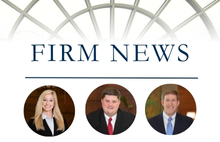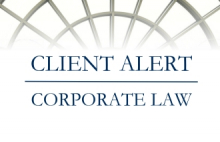How the Section 199A Proposed Regulations Would Affect Businesses
October 2018On August 8, 2018, the Internal Revenue Service (IRS) released proposed regulations (REG-107892-18) that address the operation and calculation of the 20% deduction for qualified business income (QBI) under newly enacted Section 199A of the Internal Revenue Code (the “Code”). These proposed regulations would apply to a domestic business operated as a sole proprietorship, partnership (including a limited liability company taxed as a partnership), S corporation, trust, or estate.
Background
The federal Tax Cuts and Jobs Act (TCJA) reduced the tax rate on U.S. C corporations from 35% to 21%, while reducing the top rate on individual income from 39.6% to 37%. To mitigate the disparity between the 21% corporate and 37% individual tax rates, Congress enacted Section 199A to provide an effective marginal tax rate decrease for non-corporate taxpayers. Section 199A provides non-corporate taxpayers (i.e., passthrough entities) with a deduction of up to 20% of their QBI. The Section 199A deduction is subject to several limitations. First, the deduction cannot exceed the difference between taxable income and net capital gain. Second, the deduction cannot exceed the greater of (i) 50% of the taxpayer’s share of W-2 wages of the passthrough entity, or (ii) 25% of the taxpayer’s share of the W-2 wages of the passthrough entity plus 2.5% of the unadjusted basis of "qualified property" used in the qualified business activity (collectively, the “Wage-Basis Limitations”). Third, income from a specified service trade or business (SSTB) is not eligible for the deduction. However, the Wage-Basis Limitations and SSTB limitation apply only to partners, shareholders, or sole proprietors with taxable income in excess of a threshold ($157,500 for single filers and $315,000 for joint filers). The limitations phase in over the next $50,000 of income ($100,000 for joint filers) above these thresholds. This means that for single taxpayers with taxable income in excess of $207,500 and joint filers with taxable income in excess of $415,000, the Section 199A deduction is fully subject to the Wage-Basis Limitations and is completely unavailable for business owners of an SSTB.
If the full 20% deduction under Section 199A can be used, the deduction reduces the effective tax rate for non-corporate taxpayers to 29.6%. The Section 199A deduction is available for tax years beginning after December 31, 2017, and before January 1, 2026.
The proposed regulations clarify important issues regarding the Section 199A deduction, but they leave many questions unanswered. The discussion below summarizes several of the more important clarifications made by the proposed regulations. Other TCJA changes affecting businesses were previously discussed in a separate client alert, which contains a brief overview of Section 199A and its limitations on taking the deduction.
Definition of a Trade or Business
To claim the Section 199A deduction, the taxpayer must be involved in a trade or business. With one exception, the Section 199A proposed regulations adopt the definition of a trade or business from Section 162 of the Code (relating to deductions for business expenses). Although neither Section 162 nor the regulations thereunder defines a trade or business, ample case law and IRS administrative authority provide guidance on what constitutes a trade or business. The Section 199A proposed regulations, however, would expand the definition of a trade or business to provide that the rental or licensing of tangible or intangible property to a related business is treated as a trade or business under Section 199A if both businesses are commonly controlled. This is a welcome clarification. Many businesses are set up with real property or intangible property held in one entity that leases or licenses such property to a related entity that conducts the business. Such structures can help to insulate the real or intangible property from the liabilities of the operating business. Under the guidance, both entities would be treated as engaged in a trade or business.
Specified Service Trade or Business (SSTB)
No deduction is available for income from an SSTB (i.e., a business involving the performance of services in the fields of law, healthcare, accounting, consulting, financial services, brokerage services, athletics, or performing arts—but not architecture or engineering) for taxpayers with taxable income in excess of the applicable threshold. In light of this limitation, many practitioners proposed so-called “crack and pack” strategies. Under a "cracking" strategy, the non-SSTB portions of a business would be separated from the SSTB. The theory behind such a strategy was to allow the non-SSTB business the benefit of the Section 199A deduction. The proposed regulations limit the effectiveness of this strategy by deeming services provided to an SSTB as an SSTB, if the SSTB and the non-service business have 50% common ownership and the non-service business provides at least 80% of its services to an SSTB.
“Packing” strategies involved combining non-SSTB activities with SSTBs, such that the business overall might not be considered an SSTB. The proposed regulations address this strategy by providing that a trade or business would not be an SSTB if (1) it has gross receipts of $25 million or less, and (2) less than 10% of the gross receipts are attributable to the performance of services in an SSTB (including performance of activities incidental to the actual performance of services). For a trade or business with gross receipts greater than $25 million, the trade or business would qualify for the de minimis rule to not be treated as an SSTB if less than 5% of the gross receipts are attributable to the performance of services in an SSTB. These low percentage thresholds would make packing extremely difficult.
The proposed regulations also provide more guidance on what is considered an SSTB. One area of concern was a “catch-all” category where a business is considered an SSTB if the principal asset of the business is the reputation or skill of one or more of its employees or owners. The proposed regulations define this category of SSTBs narrowly by limiting taxpayers in this category to those who receive (i) endorsement income, (ii) income from the marketing of their image or likeness, or (iii) an appearance fee.
Wage and Basis Limitations
If the taxpayer has taxable income above the applicable threshold, the Section 199A deduction generally cannot exceed the Wage-Basis Limitations. Calculating these limitations requires determination of the W-2 wages and the unadjusted basis of the taxpayer's "qualified property." The IRS has released Notice 2018-64 to provide detailed guidance on various methods for calculating W-2 wages for purposes of the Wage-Basis Limitations on the Section 199A deduction.
Wages received as an employee-owner and guaranteed payments to partners for services rendered to the business are not considered QBI. Reasonable compensation wages paid to an S corporation shareholder-employee are therefore excluded from the definition of QBI. Historically, a common tax strategy for reducing self-employment taxes is to operate the business as an S corporation, pay the owner “reasonable compensation” (which would be subject to employment tax), and take the rest of the business income as a distribution from the S corporation (which should not be subject to employment tax). This minimized the amount of income subject to employment taxes. For business owners with taxable income in excess of the $157,500 threshold ($315,000 for joint filers), the Section 199A deduction provides a further incentive to operate as an S corporation in light of the W-2 wage limitation. For taxpayers with taxable income below the relevant threshold, an S corporation may be less desirable because the deduction of 20% of QBI would not include the reasonable compensation wages paid to the owner.
"Qualified property" for purposes of the Wage-Basis Limitations must meet the following requirements: (i) the property must be depreciable, (ii) the property must be used during the year in the production of QBI, (iii) the property must be held by the business and available for use at the end of the year, and (iv) the depreciable period must not have ended. The depreciable period for purposes of Section 199A begins when property is placed in service by the taxpayer and ends on the later of (A) 10 years after it was placed in service, or (B) the end of the recovery period under the MACRS rules. The proposed regulations provide guidance on determining the unadjusted basis, the placed-in-service date, and the depreciable period for situations where the qualified property was acquired in a transaction with a carryover basis (e.g., a like-kind exchange or a tax-free contribution of property to a business entity) or with a modified basis (e.g., inherited property).
Aggregation of Businesses
Individuals (but not S Corporations, partnerships, LLCs taxed as partnerships, or other entities) would be able to elect to aggregate multiple businesses for purposes of calculating the Wage-Basis Limitation. The proposed regulations would permit multiple businesses to be aggregated if the individual making the election satisfies the following six requirements:
- Each business must be a trade or business for purposes of Section 199A;
- At least 50% common ownership must exist (direct or indirect);
- The common ownership must have existed for a majority of the year in which the income is recognized;
- All items are reported on tax returns with the same tax year (ignoring short tax years);
- The aggregation may not include any SSTBs; and
- The businesses must meet two of the following three requirements:
- The businesses must provide products and services that are customarily provided together;
- The businesses must share facilities or significant centralized business elements; and
- The businesses must be operated in coordination with, or reliance on, other businesses in the aggregated group.
Taxpayers with income above the threshold amounts would need to analyze which, if any, businesses to aggregate to minimize the impact of any applicable Wage-Basis Limitations. Taxpayers should make these determinations carefully because the proposed regulations would require that the set of aggregated businesses be consistent for subsequent years.
Qualified Business Income (QBI) Exclusions
Section 1231 of the Code is a taxpayer-friendly provision that provides that, in general, net gain on the sale of property used in a business is treated as capital gain, and net loss resulting from the sale of property used in a business is not treated as a gain or loss from the sale of a capital asset (i.e., ordinary loss treatment). Since QBI does not include capital gain or loss, there was a question about whether gain or loss on the sale of property used in a business would generate QBI. The proposed regulations clarify that Section 1231 gain or loss would not be QBI to the extent it is treated as capital gain, but would be included in QBI if it is ordinary. By contrast, the proposed regulations provide that gain on the sale of a partnership interest treated as ordinary income under Section 751 would be included in QBI.
Income from publicly traded partnerships (PTPs) and dividend income from real estate investment trusts (REITs) are specifically excluded from the definition of QBI. However, Section 199A does provide that taxpayers may claim a deduction of up to 20% of their qualified PTP income and REIT dividends without regard to the Wage-Basis Limitations. The proposed regulations also clarifiy that if a taxpayer has an overall loss from REIT dividends and PTP income because PTP losses exceed PTP income and REIT dividends, then such losses are not netted against QBI, but are instead carried forward separately and used to offset combined REIT dividends and PTP income in future years.
Use of Trusts to Maximize the Number of Deductions
Because trusts may also claim the Section 199A deduction, several tax professionals considered a strategy of forming several trusts to multiply their Section 199A deduction in order to keep the income of each trust below the taxable income thresholds that trigger the application of the SSTB rules and the Wage-Basis Limitations on the deduction. To address this, the proposed regulations provide an anti-avoidance rule to treat multiple trusts as a single trust in certain cases where the trusts have substantially the same grantors and substantially the same primary beneficiaries and a principal purpose of such trusts is the avoidance of income tax.
The Section 199A proposed regulations address many more issues than those covered in this alert. If you have any questions regarding the impact of Section 199A or the proposed regulations, please contact Michael T. Donovan at (314) 444-7715 or Ryan C. Furtick at (314) 444-7798.








